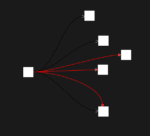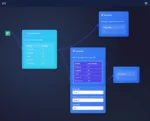
by tyler garrett | Jun 1, 2025 | Data Management
Facing the exponential growth of data today, organizations are challenged to maintain efficient, scalable, and trustworthy metadata systems. Metadata is the orchestrator behind the curtain, empowering critical operations such as data exploration, governance, lineage tracking, and analytics. With an effective distributed metadata management architecture, your organization can enhance data reliability, reduce system bottlenecks, and accelerate analytical capabilities. In a world increasingly driven by data, embracing such an architecture is no longer optional—it’s essential for businesses aiming to thrive in a fast-paced digital environment.
What is Metadata Management and Why Distribute It?
Metadata management encompasses policies, services, and technologies used to manage data about data—information describing the structure, format, lineage, usage, and lifecycle of an organization’s data assets. Traditionally, metadata implementations relied on centralized models—single repositories attempting to aggregate all metadata. However, as data scales toward petabytes and organizations adopt more sophisticated analytics, central metadata systems struggle to deliver the performance and responsiveness now expected.
Distributed metadata management addresses limitations inherent to traditional centralized metadata stores. By decentralizing metadata across multiple platforms or nodes, a distributed approach provides agility, enhanced scalability, and increased fault tolerance. It reduces latency by bringing metadata closer to data consumers in geographically distributed organizations and architecture systems.
Practically, a distributed metadata architecture enhances metadata performance and provides resiliency through replication and synchronization strategies, better serving diverse use cases of data warehousing and analytics workloads. For organizations aiming to leverage large volumes of structured and unstructured data, adopting a robust distributed metadata management solution transforms data into tangible business value, ultimately optimizing decision-making at every strategic level.
Key Components of Distributed Metadata Management Architecture
A robust distributed metadata management solution comprises various functional components that seamlessly work together to deliver value. Commonly, these components include federated metadata repositories, automated metadata ingestion systems, sophisticated metadata indexing engines, and scalable search capabilities. Federated metadata repositories ensure that metadata can reside close to the original data source, reducing latency and response time for queries.
A critical component is automated ingestion—collecting metadata from diverse data environments rapidly and systematically. Advanced ingestion frameworks ensure metadata accuracy and consistency, capturing changes in near real-time. Coupled with this are advanced metadata indexing services, allowing for faster metadata aggregation and retrieval. High-performance, distributed search capabilities further allow users to quickly locate pertinent metadata regardless of where within the distributed system it resides.
Another important component is intelligent orchestration and scheduling—a powerful capability explored in depth on our recent blog about data pipeline dependency resolution and scheduling. Intelligent orchestration ensures smooth operation among distributed metadata nodes. Advanced scheduling capabilities assist in resolving interdependencies and efficiently managing parallel processes across distributed metadata infrastructures.
Scalability in Distributed Metadata Architectures
One of the foremost advantages of adopting a distributed metadata management architecture is its scalability. As more data environments and ecosystems migrate to cloud platforms and hybrid frameworks, metadata volumes multiply exponentially. Distributed systems resolve bottlenecks present in traditional architectures by horizontally scaling—seamlessly adapting to the data growth within enterprises.
Understanding the capabilities and limitations of big data versus small data scenarios is essential for successful scaling, as discussed in our detailed comparison between big data vs. small data. Deploying metadata at scale requires attention to multiple factors, including replication across geographical locations, synchronization tactics, and efficient network utilization.
To establish scalable architectures, organizations must prioritize automated replication strategies, implement efficient sharding techniques, and utilize advanced indexing capabilities to ensure robust performance. Through these techniques, enterprises can seamlessly scale their distributed metadata infrastructures in line with business demands, significantly increasing their data processing speed, operational agility, and responsiveness to business queries.
Resiliency and Self-Healing Capabilities
Beyond scalability, distributed metadata management architectures substantially enhance resiliency compared to centralized methods. Because decentralized metadata nodes exist across multiple independent repositories, system failure or performance degradation in one location will minimally impact overall system availability, offering increased resilience and stability.
Self-healing capabilities further elevate resiliency, an approach extensively discussed in our recent article on self-healing data pipelines using circuit breaker patterns. Just as data pipelines leverage automated mechanisms for failure mitigation, metadata systems also benefit from proactive monitoring, anomaly detection, and recovery. These innovative practices can automatically repair or isolate impacted metadata nodes, ensuring minimal downtime and avoiding disruption to operational analytics and reporting services.
A resilient metadata management strategy makes metadata assets available under adverse circumstances, maintaining business continuity and allowing data-driven decisions to continue uninterrupted. In today’s rapidly evolving data landscape, distributed resiliency has become essential to supporting agile business operations and uninterrupted analytics processes.
Enhancing Data Discovery and Interactive Exploration
Data analysts rely heavily on comprehensive data discovery capabilities to produce actionable insights—a powerful driver of business innovation and workforce agility, as highlighted in our exploration of the impact of data analytics on the Austin job market. Distributed metadata management architectures, by nature, significantly accelerate data discovery processes—enabling powerful, comprehensive querying of metadata across distributed sources.
Distributed metadata systems achieve high-speed retrievals and increased data visibility by utilizing techniques such as approximate query processing for interactive data exploration. Leveraging approximate queries yields nearly instantaneous responses backed by sophisticated algorithms that help balance accuracy and speed.
Additionally, interactive exploration is optimized with visual metadata representation, further enriched through innovative visualization techniques such as those we highlight in our article on multi-state data visualizations transitions and applying advanced color theory, as detailed in our guide on color harmony theory for visualization palettes. Enhancing user experience through intuitive, aesthetic, and user-friendly metadata interfaces ensures all stakeholders benefit from streamlined and efficient discovery.
Implementing a Successful Distributed Metadata Management Strategy
Successfully implementing a distributed metadata management architecture requires strategic planning, detailed roadmap development, and precision execution. Begin by clearly understanding organizational metadata needs, empowering stakeholders through collaboration. Efficient metadata collection automation, robust indexing strategies, and careful consideration of organizational locations and network constraints ensure successful system deployment.
Leaning on expert support from specialized consulting services maximizes returns on your metadata management investment. Reliable partners experienced in effective modernization of data ecosystems—like those detailed in Dev3lop’s comprehensive data warehousing consulting services in Austin, Texas—can help organizations implement sophisticated distributed metadata architectures rapidly and smoothly.
Only with a clear strategy and dependable implementation partner will organizations unlock the maximum business value provided by distributed metadata architecture—empowering decision-makers to trust organizational insights, strengthen data-driven cultures, elevate performance across business units, and drive continual innovation within their competitive markets.
Final Thoughts on Embracing Distributed Metadata Management
As data environments expand and expectations heighten, strategically embracing distributed metadata management puts your organization ahead of competitors, enhances innovation speed, and transforms how internal teams utilize and explore information for critical decisions.
Choosing the correct distributed metadata management architecture results in scalable infrastructures supporting powerful analytics, real-time insight workflows, resilient and self-healing data operations, and intelligently optimized user experiences. Achieving this requires expertise, strategic alignment, and confidence in employing advanced technologies and industry best practices.
Position your organization for success—embrace distributed metadata management to unleash powerful data opportunities and accelerate your journey towards advanced analytics innovation.
Thank you for your support, follow DEV3LOPCOM, LLC on LinkedIn and YouTube.

by tyler garrett | Jun 1, 2025 | Data Management
In today’s data-driven environment, organizations perceive data not just as a byproduct of operations, but increasingly as a strategic asset that fuels innovation and competitive advantage. However, alongside the technical evolution comes an important debate: data ownership versus data stewardship. While often used interchangeably, these concepts represent fundamentally different approaches, each carrying unique technical implications. Understanding the distinction and the pragmatic technical implementation of each ensures organizational alignment, optimized data quality, improved analytics, and responsible data governance. As Google Cloud Platform consulting specialists, we frequently engage with enterprises eager to harmonize their strategy around intelligent data usage. In this post, we’ll guide you through the nuances of data ownership versus stewardship, helping you leverage strategic and technical clarity to propel your data-driven growth.
Understanding Data Ownership: Rights, Responsibility, and Technical Implications
Data ownership explicitly defines who within the organization has rights over data, from determining how data is stored, secured, accessed, and utilized. Ownership assigns clear accountability for the integrity and accuracy of data assets, creating a point of accountability on business units, individuals, or teams that generate and utilize data daily. Technically, establishing robust data ownership involves implementing role-based access controls (RBAC), proper version management, and efficient data lineage tracking. Ensuring clarity over data ownership translates to critical benefits, especially when faced with compliance obligations such as GDPR or HIPAA.
To meet this technical requirement, organizations often utilize platforms offering advanced metadata management, thereby ensuring transparency and autonomy among data stakeholders. Additionally, data ownership emphasizes assigning accountability at an architectural level, shaping vital processes such as data updates. Having clarity on ownership streamlines operations like modifying existing data within databases, ensuring consistency and reliability across data stores. Utilizing modern tools and practices, your data architecture becomes more scalable, accountable, and compliant.
Exploring Data Stewardship: Guiding Data Usage and Policy Enforcement
While data ownership determines who controls the data, data stewardship addresses the critical “how.” Data stewardship defines the policies and procedures guiding the responsible usage, alignment of data with business objectives, and compliance with data standards and regulatory frameworks. This role is integral for governance, as stewards actively ensure adherence to established data quality thresholds, regulatory mandates, data categorization, and retention policies.
From a technical standpoint, data stewardship relies heavily on orchestration tools, lineage solutions, and quality dashboards. Implementations may include rules-based policy engines integrated within data pipelines, alerting stewards to anomalies or compliance issues early, thus enabling fast remediation. For instance, building resilient data pipelines with graceful degradation acts as an ideal stewardship practice, ensuring data reliability and consistency even when upstream inputs fluctuate.
Moreover, stewardship enriches data analytics by ensuring the rigorous application of standards and metadata. Stewards provide meaning to raw data containers, enabling analysts to deliver innovative insights reliably. Thorough data stewardship practices become especially critical when utilizing advanced visualizations, such as ternary plots for compositional data, where maintaining quality and consistent definitions significantly impact derived insights.
Implementing Robust RBAC and Data Policy Engines for Ownership and Stewardship
The technical command center of data ownership and stewardship lies in robust identity and access management (IAM) strategies, as well as comprehensive policy engines. Role-Based Access Controls (RBAC) function effectively by assigning permissions explicitly tied to roles aligned with organizational structures. Advanced data platforms such as Google Cloud Platform excel in providing granular control of data access, fostering a secure and compliant environment for analytic operations.
Advanced policy engines then complement RBAC by enabling data stewards to enforce compliance, validation criteria, and data quality rules automatically within data transformation workflows. Policies can spotlight data temperature, sensitivity, or usage frequency categories, automatically handling sensitive anomality detection or activating security thresholds. Ultimately, well-implemented technical frameworks grant stakeholders both precise control over access and practical oversight, crucial for empowering informed analytics decisions.
Organizations seeking nuanced assistance integrating robust RBAC and fine-tuned policy engine customizations leverage expert technology services such as our tailored Google Cloud Platform consulting solutions, maximizing return on investment from their data architecture modernization initiatives.
Visualization Tools: Leveraging Ownership and Stewardship Insights Effectively
Data visualization techniques are crucial enablers in showcasing insights derived through clearly defined ownership and effective stewardship. Well-structured visualizations make complex analytics meaningful, candidly representing critical points—whether data lineage to clarify stewardship impacts or user access provisioning audits illustrating ownership clarity.
Creative visual methodologies, such as heat maps or hex bin density plots, become powerful assets thoroughly communicating stewardship impacts. Specifically, visualizing data usage patterns across different user roles clarifies how decisions on access or resources allocation affect operational effectiveness. Additionally, leveraging strategic visualization methods allows organizations to showcase straightforward data-quality metrics and policy compliance status clearly, driving accountability across internal teams.
Effective visualization methods amplify stewardship insights, clarifying complex decisions surrounding sensitive healthcare analytics, such as those highlighted in our exploration of data analytics transformation within the Austin healthcare industry. Employing advanced visualization techniques ensures stakeholders understand and act upon critical stewardship and ownership insights, strengthening data’s strategic use throughout your organization.
Data Optimization Through Ownership and Stewardship Synergy
Ownership and stewardship, when technically well-aligned, drive peak performance in data optimization efforts across the organization. Implementation of effective ownership clarity enables rapid asset discovery, meaningful lineage tracing, and reduces redundancies such as potential duplication of effort or shadow IT scenarios. Proper stewardship guarantees consistent enforcement of data quality, governance standards, and policies, leading to greater insights, informed analytics, and faster decision-making.
Advanced technical practices, including projection pushdown optimization in data access patterns, exemplify this synergy. Such optimization accelerates analytics processing by incorporating data ownership clarity and stewardship-defined access requirements directly into data retrieval pipelines, enhancing performance and drastically cutting operational overhead.
The synergy of well-defined ownership and stewardship propels organizations to harness analytical innovations confidently. Strategic IT transformation, supported by robust frameworks and disciplined implementation approaches, unlocks the full potential of your data assets, generating competitive advantages embedded into your decision-making capability and strategic innovation pathways.
Future Forward: Governing Data Through Ownership and Stewardship Alignment
With ever-accelerating data growth and expanding technical complexity, defining your ownership framework clearly and curating strategic stewardship actions become business and innovation imperatives. The future belongs to organizations excelling at governance facilitated by seamless technical implementation of data ownership and meticulous stewardship practices. As regulatory landscapes continue to evolve, ensuring clarity around accountability and oversight procedures is vital to maintain trust, transparency, compliance, and competitive agility.
Organizations investing in coordinated technical platforms, automation tools, resilient data pipeline designs, and advanced visualization capabilities proactively prepare for emerging data-centric challenges effectively. Clear technical distinction between data ownership and stewardship drives ideal scenarios—ranging from ensuring consistent compositional data reporting with ternary visualizations, to rapidly facilitating visualization explorations described in our resource on creative data visualization approaches.
Clearly defining both ownership and stewardship aligns diverse internal stakeholders toward cohesive data strategies. Easy-to-use, automated technology implementations ensure continuous improvement—paving the path towards sustained analytics excellence, trusted governance, and transformative innovation.
As technology consultants specializing in data, analytics, and innovation, understanding clearly defined data ownership and data stewardship practices enables our clients to realize meaningful long-lasting returns on technical investments. Ready to clarify your data governance strategies and build intelligent technical implementations? Let our expertise set you on a confident, innovatively empowered pathway.
Tags: Data Ownership, Data Stewardship, Data Governance, RBAC Implementation, Data Analytics, Google Cloud Platform
Thank you for your support, follow DEV3LOPCOM, LLC on LinkedIn and YouTube.

by tyler garrett | Jun 1, 2025 | Data Management
In today’s rapidly evolving digital landscape, organizations are often inundated with overwhelming volumes of unstructured content. Emails, documents, audio files, videos, and social media data can create clutter rather than clarity. To turn this tremendous data stream into meaningful insights, decision-makers must develop effective data taxonomies. A meticulously defined taxonomy not only streamlines data discovery but also serves as a robust foundation for sophisticated analytics and innovation. Whether you’re establishing automated data pipelines for audits, enhancing integration capabilities, or powering cutting-edge dashboards with advanced visualization techniques, a strategic approach to taxonomy development ensures consistent data-driven decisions. Let’s explore how you can master data taxonomy development, extracting strategic value from your vast troves of unstructured content.
Understanding The Importance of Data Taxonomy
Before delving into the nuts and bolts of data taxonomy, it is vital to understand why it matters. Unstructured content—reports, emails, multimedia, and social media feeds—presents extensive challenges due to variations in format and granularity. Without a systematic way to categorize such data, organizations find themselves stuck with fragmented insights, inefficient searches, and inaccurate analytics. An effective data taxonomy allows enterprises to organize and classify their vast data assets, creating valuable context and promoting consistency across knowledge domains. When properly implemented, data taxonomy directly influences multiple aspects of your analytics environment, from improved data integrity in dashboards to streamlined compliance and reporting.
For organizations adopting data-driven platforms such as Power BI consulting services, having an effective taxonomy framework is non-negotiable. A robust taxonomy serves as a backbone, allowing effective analysis and improved visualization capabilities like those used in sophisticated reporting and analytics platforms.
Taxonomy development also mitigates common pain points often experienced in unstructured data management. Without clearly defined data concepts and relationships, organizations risk data siloes, redundancy, and inefficient governance models. By unifying data definitions and categorization standards through taxonomy development, enterprises unlock clarity, enhancing collaboration, accessibility, and fostering data integrity throughout the organization.
Key Components of an Effective Data Taxonomy
Developing taxonomies for unstructured data is not merely about labeling and categories; it involves systematically mapping relationships and hierarchies across your organization’s knowledge domains. To begin, stakeholders must analyze existing data ecosystems, identifying critical concepts, terminology, attributes, and metadata that drive meaningful business insights.
A successful data taxonomy typically incorporates several foundational components, including clearly defined data categories, standardized metadata, taxonomic relationships, and hyponymy—it’s crucially important to preserve hierarchical relationships effectively. By doing so, organizations can facilitate flexible querying, rapid retrieval, and streamlined interpretation of ever-expanding data sets.
In achieving flexibility and accuracy, your taxonomy must align directly with enterprise architecture and business objectives. Instead of static borders, flexibility and dynamism in taxonomy ensure long-term adaptability. Consulting resources such as Dev3lop’s work on data integration pattern libraries can offer valuable guidance, particularly where data structure heterogeneity demands reusable integration solutions.
Moreover, taxonomy can enable sophisticated data processing workflows. For example, clear taxonomies simplify rule-based automation—critical for large-scale transformations and business logic implementations. Leveraging data taxonomies can help effective implementation of business rules engines in data transformations, enhancing consistency and repeatability throughout the data lifecycle.
Techniques and Methodologies for Taxonomy Development
Establishing clarity from unstructured data can seem daunting, but proven methodologies can streamline taxonomy development. Organizations generally adopt a hybrid approach combining top-down and bottom-up strategies. This involves starting from core business goals and domain knowledge (top-down), and simultaneously mining existing unstructured data to extract taxonomic insights based on patterns, usage, or common metadata attributes (bottom-up).
Machine learning and Natural Language Processing (NLP) prove especially valuable during this stage. NLP algorithms can identify entities, capture relevant metadata elements, and even auto-generate preliminary hierarchical structures from unstructured texts such as emails, Twitter feeds, and industry reports. Technological innovation empowers stakeholders to rapidly iterate taxonomies, ensuring completeness, consistency, and relevance.
An increasingly popular methodology known as faceted taxonomy development helps organizations build taxonomic frameworks through multiple relevant attributes. This allows powerful filtering and search capabilities, considerably enhancing your final user’s data discovery experience. Maintaining such dynamic taxonomies is notoriously difficult. It requires consistently monitoring data feedback loops through event sourcing for auditable data pipelines, thus ensuring accuracy and timely taxonomy refining.
Follow industry best practices by incorporating user feedback actively into the taxonomy-building process. Consulting an experienced technology partner ensures strategic alignment to user expectations, innovation strategies, and long-term maintenance feasibility.
Integrating Taxonomy Within an Enterprise Data Architecture
The development of your taxonomy is only half the journey; you must skillfully incorporate it throughout your enterprise data architecture. Integrating your taxonomy enables an adaptive application across data lakes, data warehouses, search engines, and analytics dashboard solutions. Crucial at this stage is seamless data integration and transformation—whether migrating historical data or adopting streamlined reporting solutions.
When executing complex data integration strategies, experts can employ robust backfill methodologies for historical data processing. Clearly defined taxonomies simplify automated reclassification and data auditing during such backfill processes, reducing risk and enhancing visibility.
Central to taxonomy integration is the use of metadata management tools and frameworks, complemented by robust business intelligence solutions like Power BI. When connecting taxonomy-driven data with visualization-focused platforms, your strategic differentiation often arises directly from your technology decisions. Leveraging advanced rendering technologies—including discussing differences between SVG, Canvas, and WebGL for Data Visualization—can significantly improve visualization quality, interactivity, and end-user engagement.
Ultimately, strategic integration results in a cohesive data architecture model. Decision-makers will witness unparalleled improvements in analytical accuracy, business intelligence responsiveness, compliance adherence, and innovative data-driven decision-making capacity across all organizational functions.
The Organizational Impact of Data Taxonomy Investments
Businesses need to carefully evaluate organizational impacts when investing in taxonomy development. Key improvements include greater effectiveness in analytics and business intelligence, enhanced regulatory compliance, more robust knowledge management, dramatically improved user experience, and efficient governance. A strategically formulated taxonomy empowers enterprises to capitalize fully on their unstructured content, placing key insights and information directly in the hands of knowledge workers at every organizational level.
Additionally, taxonomy investments cultivate an environment that supports future innovation and advanced analytics. For organizations keenly building their analytics teams, taxonomy development creates a learning ecosystem, strengthening your data engineering career and skills path. Emerging specialists now have clarity into business concepts, data structures, workflows, and relationships—which enables rapid team skills development and onboarding.
Furthermore, implementing strong taxonomy interlinks with initiatives such as auditable data pipelines and reusable integration templates. These patterns empower innovation while significantly reducing data redundancies, compliance risk, and governance complexity. Organizations adopting strategic data taxonomy decisions are far more likely to transform their extensive content liabilities into tangible strategic assets.
Investment in taxonomy development underlines organizational commitment to data excellence, driven decision-making, and robust innovation strategy. When executed properly, it’s no longer an administrative overhead but a true competitive advantage—essential for organizations seeking to thrive in data-driven markets.
Conclusion: Strategize Your Approach to Data Taxonomy
Thank you for your support, follow DEV3LOPCOM, LLC on LinkedIn and YouTube.

by tyler garrett | May 30, 2025 | Data Management
Navigating today’s incredibly fast-paced digital ecosystems requires businesses not only to leverage their data effectively but also to strategically share and exchange it with external partners. Whether it’s supply chain insights, customer behavioral patterns, market analytics, or collaborative innovation projects, inter-company data sharing can significantly amplify organizational capabilities and open new avenues for competitive advantage. However, without a robust governance framework, sharing sensitive data externally can quickly become risky. Data breaches, compliance violations, reputational damages, reliance on incompatible technologies—all these risks underline the critical need for a clearly defined inter-company data governance strategy. As experienced providers in the realm of Microsoft SQL Server consulting services, let us walk you through the key strategic pillars required to successfully construct an Inter-Company Data Sharing Governance Framework.
Defining the Need for a Governance Framework in Inter-Company Data Sharing
Given today’s escalating volume, velocity, and diversity of digital data flows, industries increasingly rely on broad and effective external data sharing. Inter-company data exchanges empower organizations to collaborate effectively on research, develop tailored customer offerings, refine business processes, and swiftly respond to rapidly changing market dynamics. Nevertheless, sharing data beyond internal organizational boundaries introduces significant complexities and risks. Organizations that lack adequate governance face significant threats from compromised data security, regulatory non-compliance, and distortions caused by incompatible systems or unstructured workflows. Therefore, establishing a clearly articulated governance framework serves as a preventive measure, offering strategic clarity, security assurances, and a standardized methodology across companies participating in data exchange arrangements.
Companies encountering complexities with geospatial representation transformations, for example, encounter challenges like data inaccuracies and distortions. For more information on overcoming these complexities, take a look at our recent insights on Cartogram Implementation for Geospatial Data Distortion. Establishing firm governance foundations helps mitigate common pitfalls and acts as a protective barrier shielding sensitive corporate data assets from intrusive or inadvertent breaches. Clearly delineated governance standards are not just recommended—they are becoming a business necessity founded in regulatory compliance, operational efficiency, and risk mitigation best practices.
Establishing Clear Roles and Responsibilities
A cornerstone of an effective governance framework is the clear identification of roles and responsibilities across both internal stakeholders and external collaborators. This task involves defining designated Data Stewards, Compliance Officers, Security Experts, and Data Analysts responsible for overseeing and maintaining data integrity, accuracy, and security throughout shared data flows.
Effective role designations and a well-articulated accountability matrix ensure organizational clarity, streamline communication between companies, and delineate who possesses the authority and responsibility to make critical decisions regarding inter-company data governance. Apart from internal clarity, clearly defined roles also facilitate smoother collaboration between multiple organizations, assisting each party in understanding expectations, duties, and the boundaries involved in data sharing arrangements.
Clear and concise documentation should define each entity’s duties: from understanding data source quality control to managing and coordinating external partner workflows. For example, when applying data transformations and security measures like row-level security management, specific personnel should be empowered and technically knowledgeable. You can explore the concepts of security layers in detail by reviewing our guide on row-level security implementation in data transformation flows.
Implementing Appropriate Technological Standards and Platforms
To facilitate seamless inter-company data sharing, organizations should clearly establish and agree upon compatible technological standards and platforms. Shared platforms need cohesiveness, scalability, and robust security protocols. Inter-company data sharing effectiveness is highly influenced by the data integration and compatibility of analytical solutions chosen.
When considering database architectures, the decision of data storage solutions—such as PostgreSQL vs SQL Server databases—can markedly affect data transfer performance, management costs, and processes. For decision-makers analyzing relational database solutions, consider reviewing our article highlighting key performance and structural differences between these two leading options: Differences between PostgreSQL and SQL Server. Adherence to common standards or interoperability between selected technologies helps mitigate costly integration errors and maintain continuous operational efficiency.
Moreover, modern platforms like data lakes, enterprise data warehouses, or cloud services demand considerations surrounding cross-platform compatibility and security guidelines. Security configurations, API integration specifications, encryption strategies—all these elements must stand on standards developed collaboratively. Embracing a standardized technological ecosystem promotes trust, consistency, and seamless interoperability, serving as the backbone of robust inter-company data sharing governance.
Security Protocols and Compliance Framework
Maintaining data security and ensuring strict regulatory compliance constitute non-negotiable components underpinning an inter-company data sharing governance framework. Organizations must institute explicit security policies covering data access control, user authentication procedures, encryption mechanisms, and data breach response protocols. Implementing rigorous data security mechanisms not only mitigates intrusion risks but also facilitates smoother and more transparent collaboration due to an established trust foundation.
For instance, establishing clear security monitoring along with pattern matching in data security audits can become intuitive if you incorporate methods like SQL wildcard applications in database queries—essential skills outlined further in our practical guide, SQL Wildcards: A Guide to Pattern Matching in Queries.
Furthermore, strict adherence to relevant industry and global data protection regulations—such as GDPR, HIPAA, and CCPA—ensures companies remain proactively compliant and avoid hefty penalties or reputational harm. Data governance frameworks should document transparent communication between companies and regulators, update compliance measures consistently, and establish clear response protocols for addressing unforeseen compliance challenges.
Ensuring Data Quality and Integrity in Shared Datasets
As companies increasingly share large datasets with external collaborators, data integrity and data quality must remain strategic priorities. Maintaining accurate and consistently high-quality data across multiple partner platforms can dramatically boost confidence in collaborative insights. Thus, clear, systematic controls for data validation, normalization, auditing, and transformations should be institutionalized within inter-company data sharing governance standards.
Employing comprehensive metadata documentation, data lineage mapping, automated validation techniques, and continuous data quality assessment tools becomes paramount, especially for extensive data exchanges. Adhering strictly to data accuracy standards also helps eliminate misunderstandings, enhance analytical outcomes, and prevent strategic misdirection due to poor data quality.
Furthermore, understanding technology compatibility issues before disaster strikes—and knowing how to troubleshoot common errors—is crucial. Familiarizing your technical teams with preventive measures for errors, such as addressing common system issues like “Error 1084: This Service Cannot Be Started in Safe Mode”, can reinforce your technology reliability under collaborative data operations.
Ongoing Monitoring, Feedback, and Continuous Improvement
Inter-company data sharing governance doesn’t end after establishing initial protocols. Maintaining agile and efficient data exchange frameworks demands monitoring and continuous improvement through regular feedback loops between collaborators. Proactively gathering feedback through periodic collaborative reviews, stakeholder surveys, security audits, and data performance analysis ensures that governance remains relevant amidst evolving business needs and technological capabilities.
It’s equally essential to nurture stakeholder communication channels designed to regularly monitor and disseminate cross-corporate feedback regarding data exchange effectiveness. Applying analytics-driven assessments for governance key performance indicators enhances responsiveness to challenges, fuels continuous innovation, and helps managers spot areas for immediate intervention or gradual improvements.
Fostering a strategic mindset over operations will encourage your teams to consistently advance their capabilities—such as mastering cross-platform development efficiency by understanding component nuances outlined in our article, Why Mac vs Windows is JavaScript’s BFF when Using VS Code. By continuously learning and improving processes, organizations sustain inter-company data-sharing governance excellence over the long term.
Conclusion: Crafting a Strategic Path Towards Collaboration Excellence
Ultimately, your organization’s ability to maximize the strategic power of inter-company data sharing depends on a well-designed and precisely executed governance framework. Clearly defined roles, aligned technological standards, robust security protocols, maintained data quality, and proactive monitoring collectively form the bedrock necessary for sustainable, secure, and value-driven collaborative partnerships. With careful attention and strategic selection of these areas, you establish a platform built not just on the technology but trust and mutual confidence between cross-company teams and stakeholders. Such a foundation enables organizations to unlock exciting, collaborative innovation opportunities while minimizing risks inherent to shared digital operations.
Thank you for your support, follow DEV3LOPCOM, LLC on LinkedIn and YouTube.

by tyler garrett | May 30, 2025 | Data Management
In today’s fast-paced digital environment, businesses are the stewards of increasingly vast amounts of sensitive information, from financial figures and employee personal records, to confidential client data. With great data comes not only great opportunity, but also significant responsibility. Cybersecurity threats become ever more sophisticated, prompting enterprises across all sectors—such as financial services, healthcare, and e-commerce companies—to search for innovative, robust data protection measures. One powerful strategy to secure sensitive data at a granular level is Column-Level Encryption (CLE), an advanced technique that encrypts specific database columns, safeguarding critical business information from unauthorized access. Understanding and implementing Column-Level Encryption isn’t merely an IT decision; it’s a strategic imperative. Let’s dive deeper into CLE, exploring its role in data security, how it impacts analytics, and how businesses can effectively adopt it to thrive in an increasingly regulated and security-conscious digital landscape.
Understanding Column-Level Encryption: The Baseline for Data Protection
To effectively leverage data analytics for strategic decision-making, organizations must first establish strong data governance foundations—including robust data encryption practices. Column-Level Encryption offers a compelling solution because it allows security controls applied directly at the granular, individual field level, right where sensitive information resides. This targeted approach ensures that even if perimeter defenses are breached, the encrypted data remains indecipherable and useless to unauthorized parties.
Column-Level Encryption (CLE) utilizes cryptographic methods to encode selective database fields. Fields such as social security numbers, financial account details, passwords, or proprietary information are ideal targets for CLE due to their high sensitivity. By encrypting data at the column level rather than the whole database, organizations retain efficiency and avoid unnecessary overhead, striking an optimal balance between security and performance.
Notably, the application of Column-Level Encryption can seamlessly coexist alongside other robust data security practices like event sourcing implementations for auditable data pipelines, as discussed in our previous blog post on Event Sourcing Implementation for Auditable Data Pipelines. Ultimately, CLE complements your existing cybersecurity toolset, adding an invaluable layer of protection while supporting complex data architecture and flexible query models.
Technical Implementation: Key Steps and Best Practices
Preparing to implement Column-Level Encryption requires robust technical insight and meticulous planning. First, organizations need to conduct a comprehensive sensitivity analysis, identifying precisely which data columns warrant further protection. Once determined, the encryption method is selected—often symmetric encryption for speed, or asymmetric cryptography if required by policy or compliance standards.
Next, database administrators (DBAs) and architects must manage encryption keys carefully. Implementing a well-structured key management strategy utilizing secure hardware or cloud data warehousing services like Amazon Redshift simplifies secure encryption and key rotation practices. Amazon Redshift makes it easier for enterprises to securely store encryption keys through AWS KMS, supporting seamless integration between encryption automation and analytics workloads.
To ensure precision in the encryption process, organizations typically use custom scripts or leverage prebuilt User-Defined Functions (UDFs). Building specialized functions through custom UDF development for specialized data processing empowers organizations to tailor cryptographic solutions specifically to their analytics workflows and security frameworks.
Once implemented, routine testing and validation are essential. Tools and strategies, such as automated quality assurance tests, effectively streamline the verification process. Our guide on Automated Data Testing Strategies for Continuous Integration outlines best practices for continuous data quality and security auditing, ensuring your encryption mechanisms continue functioning securely and as expected over time.
Implications for Data Analytics and Reporting
Implementing Column-Level Encryption requires strategic considerations for analytics and data reporting. Viewing encrypted information directly is problematic without properly managed permissions and decryption keys. However, carefully planned implementation ensures that CLE minimally affects analytical capabilities and preserves performance.
Querying encrypted columns involves applying decryption at runtime—which can lead to negligible performance overhead depending on implementation quality and system resources. Businesses need to choose wisely regarding who can access decrypted data to balance security requirements with accessibility.
Educating analysts around the unique considerations posed by encrypted columns becomes crucial. Simple SQL fundamentals still apply, so reviewing foundational techniques, as described in our informative resource Getting Started with the SELECT Statement in SQL, prepares analysts to adapt readily to encrypted data queries and practices involving secured fields.
Additionally, visualization experts and strategists may explore innovative visualization approaches, leveraging modern analytical capabilities—even within encrypted environments. Techniques highlighting connections within complex datasets, explored in our article on Non-Euclidean Visualization Techniques for Network Data, can provide powerful insights without putting sensitive data at unnecessary risk, keeping encryption intact while reaching insightful analytical conclusions.
Addressing Compliance and Ethical Challenges
Increasingly stringent regulatory frameworks and corporate ethical principles surround today’s data management practices, mandating that businesses approach sensitive data security responsibly. Column-Level Encryption helps demonstrate clear regulatory alignment, enabling businesses to meet critical compliance requirements efficiently.
Compliance regulations such as GDPR, HIPAA, and PCI DSS make it increasingly necessary for companies to provide verifiable mechanisms to secure sensitive data and maintain strict auditing capabilities—making Column-Level Encryption integral to compliance initiatives.
Beyond regulations, ethical considerations matter, highlighting the fact that robust security protocols protect more than corporate profits; they center around safeguarding privacy and integrity. Our exploration of Ethical Considerations in Data Engineering and Analytics provides further context on aligning encryption strategies effectively within responsibility-driven organizational ethics.
By embracing transparent security standards, enterprises establish trustworthiness, strengthening relationships with clients and stakeholders—a business advantage explored by successful leading organizations in our insightful article on How Austin-Based Companies Are Using Data Analytics to Improve Their Operations. Better security means better business operations and public confidence.
Overcoming Adoption Challenges
Adopting Column-Level Encryption can initially challenge existing business paradigms, particularly when it comes to shifting internal processes, workflows, and roles. To manage these complexities, clear communication and careful change management planning will be essential.
Organizations need a clear migration strategy focused on incremental adoption, leveraging best practices to avoid unexpected disruptions. Proper education and practical guidance targeted to specific teams help smooth transitions and improve acceptance, minimizing errors and frustrations like the scenario described in our article about troubleshooting the common error: “Error 1084: This service cannot be started in safe mode”.
Implementing proactive cross-departmental collaboration involving security, compliance, analytics, and IT stakeholders can address common concerns around cost, complexity, and risk. Expert guidance paired with clear objectives dramatically improves the likelihood that demand-driven Column-Level Encryption policies succeed within your organization.
With diligent planning, thoughtful training, and expert advice, successful deployment of column-level encryption becomes achievable for organizations of all sizes. When led properly, Column-Level Encryption enhances the maturity level of your overall data strategy without placing unnecessary burden on your teams.
Conclusion: Elevating Data Security to Strategic Priority
Column-Level Encryption presents an effective, forward-thinking solution that explicitly recognizes sensitive data as a valuable corporate asset needing vigilant safeguarding. As cyber threats intensify, underpinning business analytics capabilities with sophisticated security techniques like CLE is no longer optional—it’s foundational.
Strategically adopting and implementing Column-Level Encryption protects the organization’s data assets, aligns with demanding regulatory compliance requirements, supports data ethics and builds trust. By equipping technical teams, analysts, and visionaries with the appropriate methodologies and knowledge, Column-Level Encryption emerges not only as a technical security solution but as a major competitive advantage.
Ultimately, wise investments in Column-Level Encryption pay significant dividends—maintaining brand reputation, securing strategic value from analytics initiatives, and ensuring business longevity in today’s challenging digital data landscape.
Thank you for your support, follow DEV3LOPCOM, LLC on LinkedIn and YouTube.

by tyler garrett | May 30, 2025 | Data Management
Imagine meticulously collecting terabytes of data only to discover significant organizational confusion surrounding what it all truly means. In today’s competitive landscape, where accurate decisions hinge on speedy data retrieval, understanding the information in front of us is paramount. User-driven data classification transforms chaotic information into intuitive, efficient, and actionable insights, championing a culture of clarity within your organization. As experienced technical strategists specialized in data insights and analytics, we’ve guided numerous enterprises through innovative solutions—such as advanced Tableau consulting services—to enable smarter, swifter, and better-informed business decisions. This article acts as an implementation roadmap, unveiling practical strategies to introduce user-driven data classification into your data stack confidently.
Understanding the Significance of User-Driven Data Classification
User-driven data classification is not merely a technical buzzword; it is a strategic initiative empowering your entire organization to leverage information effectively. Traditional data management approaches often leave data categorization solely to IT or analytics teams, lacking essential context and practical insights from those actually using the information daily. By prioritizing user-driven classification, you distribute that responsibility across your business units, helping you grasp the subtle contexts, nuances, and requirements unique to different departments and teams.
Take customer data, for example. Your sales team views customer information in terms of “prospects,” “qualified leads,” and “high-value customers.” However, the IT department traditionally classifies that same data by accessibility levels, security clearance, or the database’s structural integrity. User-driven data classification bridges this descriptive gap by summing up perspectives from across your enterprise, creating alignment amongst all functional teams. This clarity catalyzes better decision-making and expedites data analytics efforts, crucial in scenarios where budgets and resources might be limited—emphasized in our article “How to Prioritize Analytics Projects with Limited Budgets.”
Implementing effective data classification also enhances compliance efforts, ensuring data privacy and security regulations are intelligently enforced at the data level. Your users become active participants in adhering to governance, greatly increasing the overall data responsibility culture. This user-centric approach prevents misinterpretations, delays, or inaccuracies in analytics, ultimately propelling your business toward sustainable innovation and competitive advantage.
Key Steps to Implement User-Driven Data Classification
Define Clear Objectives and Scope
Before diving into actual implementation, clearly define what you intend to achieve through a user-driven data classification system. Begin by communicating overarching goals and concerns to stakeholders—from improved customer segmentation to comprehensive security and regulatory compliance. Clarifying these objectives upfront creates a unified vision and encourages users to embrace the classification initiative. Aim for straightforward, achievable goals that resonate, like boosting productivity, improving predictive modeling capabilities (as discussed in our case “From Gut Feelings to Predictive Models: a Client Journey“) or enhancing data-driven collaboration.
Determining the project scope is another crucial consideration. You cannot classify everything, particularly if data engineering tasks run into billions of daily events (highlighted in our “Data Engineering Case Study“). Prioritize domains or data sets where classification improvement offers tangible business benefits. Start with specific, critical areas to demonstrate value quickly, before rolling it out organization-wide. This tactical approach allows team members to familiarize themselves and witness concrete improvements before introducing the model more broadly.
Engage Your End User from Day One
User-driven implies precisely that—end users should help design, refine, and validate the proposed data classification system. Work closely with representatives from departments whose functional roles require regular interactions with data. By involving these users at every step, you’ll ensure classifications are practical rather than theoretical, reducing resistance later. Hosting workshops and feedback sessions ensures stakeholders comprehend the classification taxonomy, reducing friction and encouraging acceptance with minimal disruption.
We’re strong advocates for fostering transparency and open communication. Allowing space for end-user input facilitates critical thinking and empowers ownership, positively impacting the data classification project’s future success. Understanding real-world perspectives—such as unlocking insights from sales or marketing teams—can uncover nuances or gaps not readily visible to the analytical teams. This approach aligns perfectly with our extensive experience in facilitating collaborative data environments through our advanced Tableau consulting services.
Leveraging Appropriate Tools and Technologies
A key aspect of implementing successful user-driven classification lies in utilizing robust tools and technologies tailored to data management and analytics needs. Selecting the right technology requires careful consideration of frequency, scalability, and complexity. For example, databases can handle many classification tasks natively via SQL commands. Understanding queries like “Understanding the Difference Between UNION and UNION ALL in SQL” helps your team handle classification efficiently. Becoming adept in fundamental SQL commands significantly strengthens data classification capabilities.
Additionally, visualization and business intelligence platforms such as Tableau seamlessly integrate into your workflows, providing visual tools that directly aid user-driven classification. It enables users to interact, label, and classify data intuitively, reducing friction between technical specialists and non-technical users. Leveraging technology like Tableau promotes self-service analysis and helps data classification remain dynamic and aligned with evolving business contexts. Reach out to our trusted consultants to explore more about integrating these visual tools into your classification strategy—find more details on our advanced Tableau consulting services page.
Building Sustainable and Maintainable Data Classification Processes
Establishing Consistent Classifications and Governance Standards
User-driven classification thrives not just on user involvement but on consistency and centralized governance. Establishing clear guidelines that standardize how users categorize data ensures stability and sustainability over time. Introduce detailed standards and formatting conventions to reduce mismatches, ambiguities, and redundancies. Having documented governance rules gives your organization a resilient data structure, preventing future confusion as your business evolves.
Furthermore, disseminating these standards throughout your organization reduces risks associated with unintentional errors or ethical oversights. We explored the importance of responsible governance in our article “Ethical Considerations in Data Engineering and Analytics“. Ingraining ethically conscious classification frameworks helps protect your enterprise from compliance violations and fosters stakeholder trust in your analytics strategy.
Regular Updates and Adaptation
Classifications aren’t static; they constantly evolve. Conduct periodic reviews, re-assessments, and improvements to ensure classifications remain relevant and accurate. Data growth, changing analytics priorities, or shifts in market conditions necessitate regular updates to classification processes, ensuring sustainability and operational adaptability. Concepts from our “Recursive Data Processing for Hierarchical Structures” article may prove valuable here, as classification updates can require nuanced analysis, especially where data relationships are hierarchical or complex.
Measuring the Success of Your Data Classification Implementation
Finally, establishing clear performance indicators for success allows your business to track progress and reflect objectively on improvements. Choose metrics aligned with the goals set initially, such as increased speed in data retrieval, reduction of misclassified data entries, reduced analytics bottlenecks, and improved data-driven decision quality.
Evaluate user adoption rates and gather feedback regularly. Strong adoption significantly evidences successful implementation, reflecting an intuitive, user-friendly classification system. Also monitor security and compliance improvements, significant indicators validating classification effectiveness and enhancing organizational accountability around data. Measurements offer an opportunity to iteratively refine your process, ensuring continuous improvement toward achieving your strategic data objectives.
Conclusion: Empower Your Business with User-Driven Data Classification
Implementing user-driven data classification unlocks powerful benefits for modern enterprises, converting extensive, complicated datasets into actionable resources for decisions. Aligning your organization’s users, processes, and technologies creates a robust, adaptable, and sustainable data strategy perfectly attuned to evolving business needs and analytical innovation.
If you’re considering how to strategically navigate data classification and analytics maturity, don’t hesitate to engage experts. Our team at Dev3lop Consulting, a leading provider in data solutions, can guide your journey toward innovative, user-friendly, and effective data classification methods suited to your business objectives.
Thank you for your support, follow DEV3LOPCOM, LLC on LinkedIn and YouTube.






























